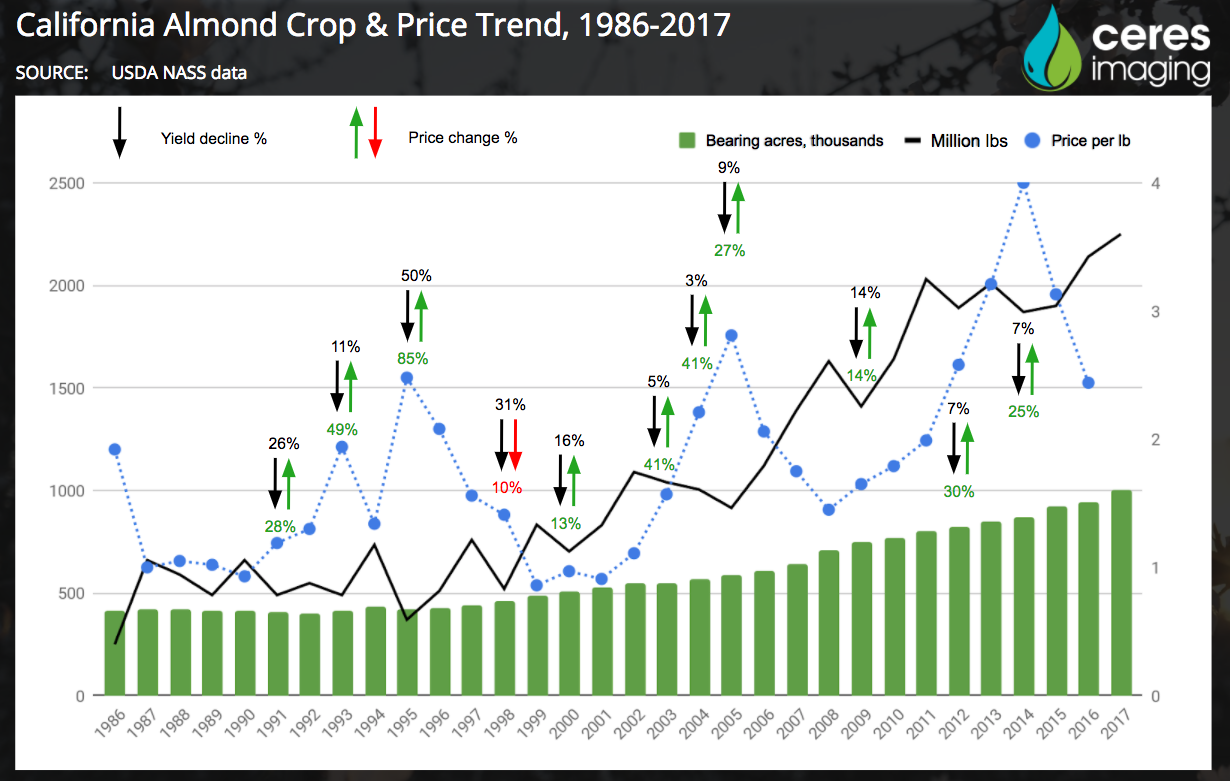In the aftermath of freeze damage and poor weather for pollination, various almond industry experts have weighed in on the likely crop for the year, and where prices may go.
A shortfall in production compared to last year may cause prices to spike, says Vernon Crowder, who spent years as Rabobank’s senior vice president and agricultural economist.
“If you look at the last 10 years of production and you look at the price, when there's even a slightly short crop, it can go to record highs,” said Crowder, who is now the executive director of Kings River Conservancy.
The bad weather for growers this season began with a series of freezes that damaged blooms around the state, as covered in a previous blog, “After the frost: Almond outlook from the UC, FSA, Farm Bureau, and more.”
“It's really bad north of Sacramento, there's a lot of people up there with total losses,” Crowder said by phone in April. “I know it was hard on the guys north of Sacramento, but that's not the biggest production area.”
Crowder said the sentiment in the almond markets is still “wait and see.”
“The general feeling here in the San Joaquin Valley is that it’s not that bad,” he said. “I've talked to some of the processors and the buyers aren’t beating each other up yet. They haven't acted like they're worried.”
At the same time, Crowder said, demand is steady, so if there is a shortfall, it will impact prices.
“The food manufacturers need the product. It's difficult for them to switch to any other nut,” he said. “It's gotten to be a very competitive product...almonds are just so popular. In the old days, 20 to 25 years ago, candy confectioners tried to use hazelnuts as a substitute, but almonds are used in so many products now and are used as a snack, that there's not much opportunities for the processors or food manufacturers to substitute. That's why they're going to compete for the product.”
Rather than substitute another nut, Crowder said, in recent shortfall years when prices spiked, some products were discontinued.
"They just didn't want to pay more than $4 a pound,” he said. “The candy manufacturers were taking a big hit on their profit margin."
For a perspective on historical almond price action in years with production shortfalls, see the earlier blog “Where will almond prices go? Wonderful's Brian Ezell talks markets.”

Crowder cautioned against a focus only on the potential for a price rise this year.
He said that as bearing acreage rises, the almond industry should be ready for price direction sharply downward if there are huge crops in the years ahead.
“We do know historically that if they get a huge crop...we have seen a big dip in prices,” Crowder said.
